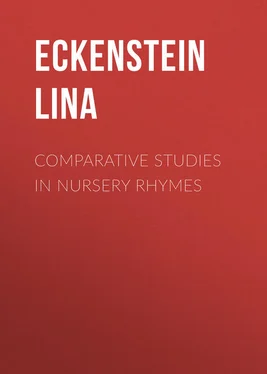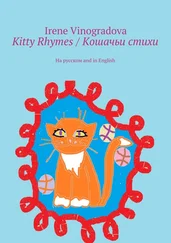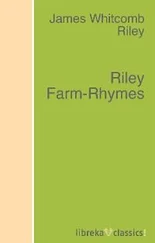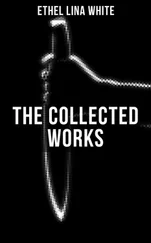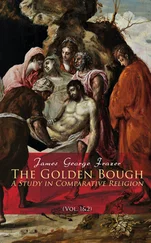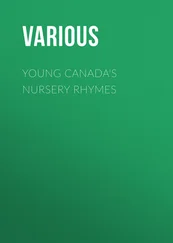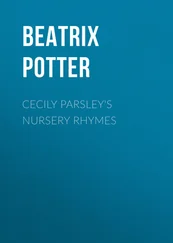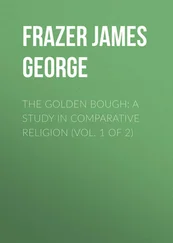Lina Eckenstein - Comparative Studies in Nursery Rhymes
Здесь есть возможность читать онлайн «Lina Eckenstein - Comparative Studies in Nursery Rhymes» — ознакомительный отрывок электронной книги совершенно бесплатно, а после прочтения отрывка купить полную версию. В некоторых случаях можно слушать аудио, скачать через торрент в формате fb2 и присутствует краткое содержание. Жанр: foreign_antique, foreign_prose, на английском языке. Описание произведения, (предисловие) а так же отзывы посетителей доступны на портале библиотеки ЛибКат.
- Название:Comparative Studies in Nursery Rhymes
- Автор:
- Жанр:
- Год:неизвестен
- ISBN:нет данных
- Рейтинг книги:3 / 5. Голосов: 1
-
Избранное:Добавить в избранное
- Отзывы:
-
Ваша оценка:
- 60
- 1
- 2
- 3
- 4
- 5
Comparative Studies in Nursery Rhymes: краткое содержание, описание и аннотация
Предлагаем к чтению аннотацию, описание, краткое содержание или предисловие (зависит от того, что написал сам автор книги «Comparative Studies in Nursery Rhymes»). Если вы не нашли необходимую информацию о книге — напишите в комментариях, мы постараемся отыскать её.
Comparative Studies in Nursery Rhymes — читать онлайн ознакомительный отрывок
Ниже представлен текст книги, разбитый по страницам. Система сохранения места последней прочитанной страницы, позволяет с удобством читать онлайн бесплатно книгу «Comparative Studies in Nursery Rhymes», без необходимости каждый раз заново искать на чём Вы остановились. Поставьте закладку, и сможете в любой момент перейти на страницу, на которой закончили чтение.
Интервал:
Закладка:
This piece contains curious mythological allusions, as we shall see later.
It may be added that the nursery collection of 1810 (p. 37) contains the first verse only of Mother Hubbard, which favours the view expressed by Halliwell, that the compiler of the famous book did not invent the subject nor the metre of his piece, but wrote additional verses to an older story.
The association of Mother Hubbard and the dog may be relatively new, but the name Mother Hubbard itself has some claim to antiquity. For a political satire by Edmund Spenser was called Prosopopeia or Mother Hubberd's Tale . It was a youthful effort of the poet, and was soon forgotten. In this piece "the good old woman was height Mother Hubberd who did far surpass the rest in honest mirth," and who related the fable of the fox and the ape. Also Thomas Middleton in 1604 published Father Hubburd's Tale, or the Ant and the Nightingale , in the introduction to which he addressed the reader as follows: – "Why I call these Father Hubburd's tales, is not to have them called in again as the Tale of Mother Hubburd. The world would shew little judgment in that i' faith; and I should say then plena stultorum omnia ; for I entreat ( i. e. treat) here neither of rugged ( i. e. ragged) bears or apes, no, nor the lamentable downfall of the old wife's platters – I deal with no such metal … etc."
We do not know that Spenser's tale was "called in again," nor does it mention ragged bears and platters. Middleton must therefore be referring to a different production to which obstruction was offered by the public authorities. In any case the name of Mother Hubburd, or Hubbard, was familiar long before the publication of the story of the dame and her dog.
Father Hubberd, who is mentioned by Middleton, figures in nursery lore also. A rhyme is cited which mentions him in connection with the traditional cupboard: —
What's in the cupboard? says Mr Hubbard;
A knuckle of veal, says Mr Beal;
Is that all? says Mr Ball;
And enough too, says Mr Glue;
And away they all flew.
Were they figured as cats?
The form of verse of this piece on Father Hubbard reproduces the chiming of bells. The same form of verse is used also in the following: —
"Fire! Fire!" says the town-crier;
"Where, where?" says Goody Blair;
"Down the town," said Goody Brown;
"I'll go and see't," said Goody Fleet,
"So will I," said Goody Fry.
The old play of Ralph Roister Doister , written about the year 1550, ends with a "peele of bells rung by the parish clerk," which is in the same form of verse: —
First bell: When dyed he, when dyed he?
Second bell: We have him! We have him!
Third bell: Roister doister, Roister doister.
Fourth bell: He cometh, he cometh.
Great bell: Our owne, our owne.
CHAPTER V
RHYMES AND BALLADS
VARIOUS nursery pieces deal with material which forms the subject of romantic ballads also. Romantic ballads, like popular songs, are preserved in a number of variations, for they were sung again and again to suit the modified taste of succeeding ages. Many romantic ballads retain much that is pre-Christian in disposition and sentiment. The finest collection of romantic ballads during recent times was made by Child, 24 24 Child, F. G., English and Scottish Popular Ballads 1894.
who included the fireside versions of ballads that have come down to us through nursery literature. Child puts forward the opinion that where we are in possession of a romantic and a fireside version of the same ballad, the latter is a late and degraded survival. But this hardly seems probable, considering that the nursery version of the tale is usually simpler in form, and often consists of dialogue only.
In the estimation of Gregory Smith, the oldest extant examples of romantic ballads "do not date further back than the second and third quarter of the fifteenth century" (that is between 1425 and 1475), "since the way in which the incidents in these are presented, reflects the taste of that age." 25 25 Smith, G., The Transition Period , 1897, p. 180, in Saintsbury, Periods of European Literature .
This applies to romantic ballads that are highly complex in form. The fireside version of the same story may have flowed from the same source. The question hangs together with that of the origin of the ballad, which may have arisen in connection with dancing and singing, but the subject needs investigation.
Among our famous early ballads is that of The Elfin Knight , the oldest printed copy of which is of 1670.
It begins as follows: —
My plaid awa', my plaid awa',
And o'er the hill and far awa',
And far awa' to Norrowa,
My plaid shall not be blown awa'.
The Elfin Knight sits on yon hill,
Ba, ba, ba, lilli ba,
He blaws his horn both loud and shrill,
The wind has blawn my plaid awa',
He blows it east, he blows it west,
He blows it where he liketh best. 26 26 Child, loc. cit., I, 6 ff.
The ballad goes on to describe how problems were bandied between the Elfin Knight and a lady. The one on whom an impossible task was imposed stood acquitted if he devised a task of no less difficulty, which must first be performed by his opponent. Such flytings go far back in literature. In this case the Elfin Knight staked his plaid, that is his life, on receiving the favour of the lady, and he propounded to her three problems, viz. of making a sack without a seam, of washing it in a well without water, and of hanging it to dry on a tree that never blossomed. In reply, she claimed that he should plough an acre of land with a ram's horn, that he should sow it with a peppercorn, and that he should reap it with a sickle of leather. The problems perhaps had a recondite meaning, and the ballad-monger probably found them ready to hand. For Child cites a version of the ballad in which the same flyting took place between a woman and "the auld, auld man," who threatened to take her as his own, and who turned out to be Death. The idea of a wooer staking his life on winning a lady is less primitive than that of Death securing a victim.
The same tasks without their romantic setting are preserved in the form of a simple dialogue, in the nursery collections of c. 1783 and 1810. In this case also it is the question of a wooer.
Can you make me a cambrick shirt,
Parsley, sage, rosemary, and thyme,
Without any seam or needlework?
And you shall be a true lover of mine.
Can you wash it in yonder well? Parsley, etc.,
Where never spring water or rain ever fell.
Can you dry it on yonder thorn,
Which never bore blossom since Adam was born?
Now you have asked me questions three,
I hope you will answer as many for me.
Can you find me an acre of land,
Between the salt water and the sea sand?
Can you plow it with a ram's horn,
And sow it all over with peppercorn?
Can you reap it with a sickle of leather,
And bind it up with a peacock's feather?
When you have done and finished your work,
Then come to me for your cambrick shirt.
On the face of it, it hardly seems likely that this version is descended from the romantic ballad.
The tasks that are here imposed on the man are set also in the form of a boast in a nursery song, in which they have so entirely lost their meaning as to represent a string of impossibilities.
Читать дальшеИнтервал:
Закладка:
Похожие книги на «Comparative Studies in Nursery Rhymes»
Представляем Вашему вниманию похожие книги на «Comparative Studies in Nursery Rhymes» списком для выбора. Мы отобрали схожую по названию и смыслу литературу в надежде предоставить читателям больше вариантов отыскать новые, интересные, ещё непрочитанные произведения.
Обсуждение, отзывы о книге «Comparative Studies in Nursery Rhymes» и просто собственные мнения читателей. Оставьте ваши комментарии, напишите, что Вы думаете о произведении, его смысле или главных героях. Укажите что конкретно понравилось, а что нет, и почему Вы так считаете.
